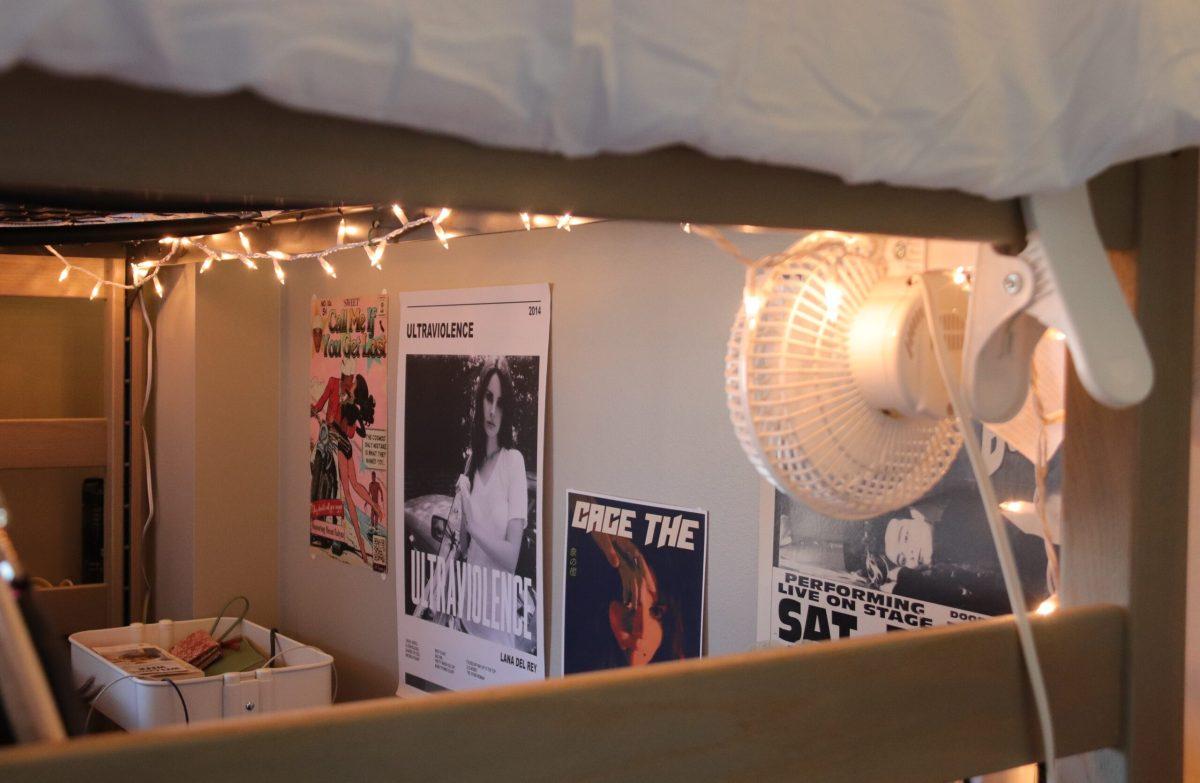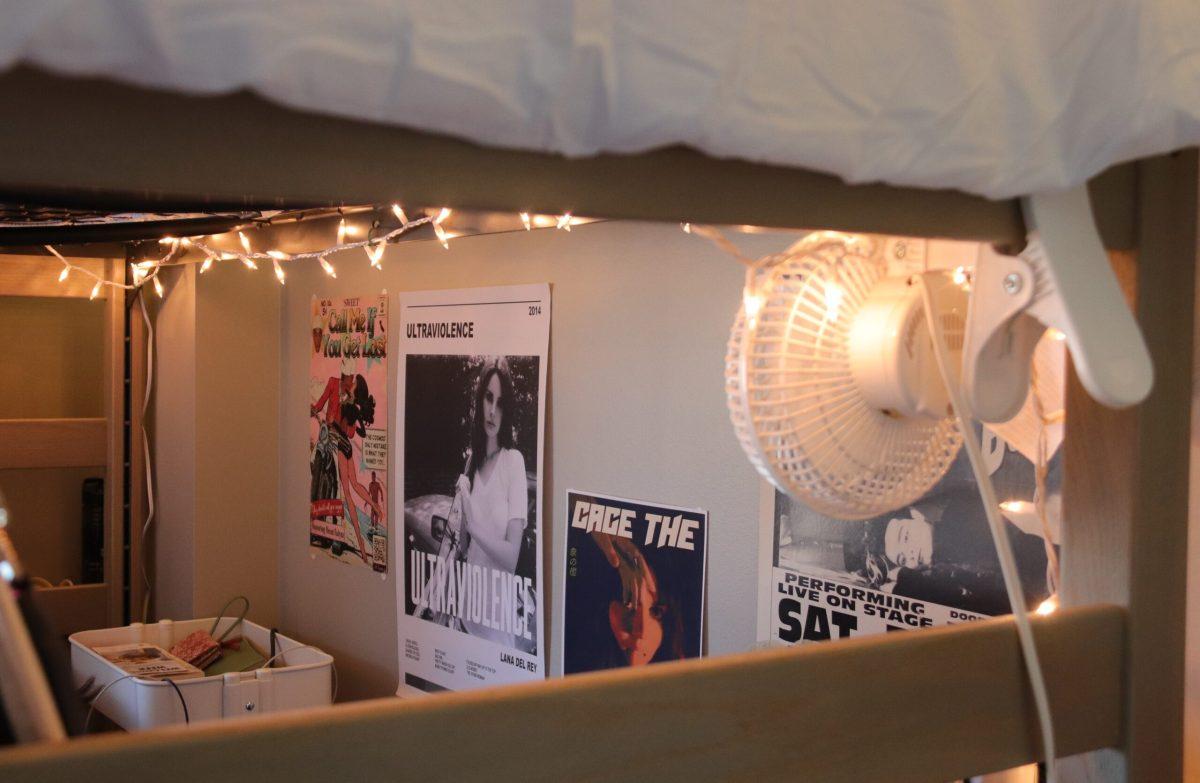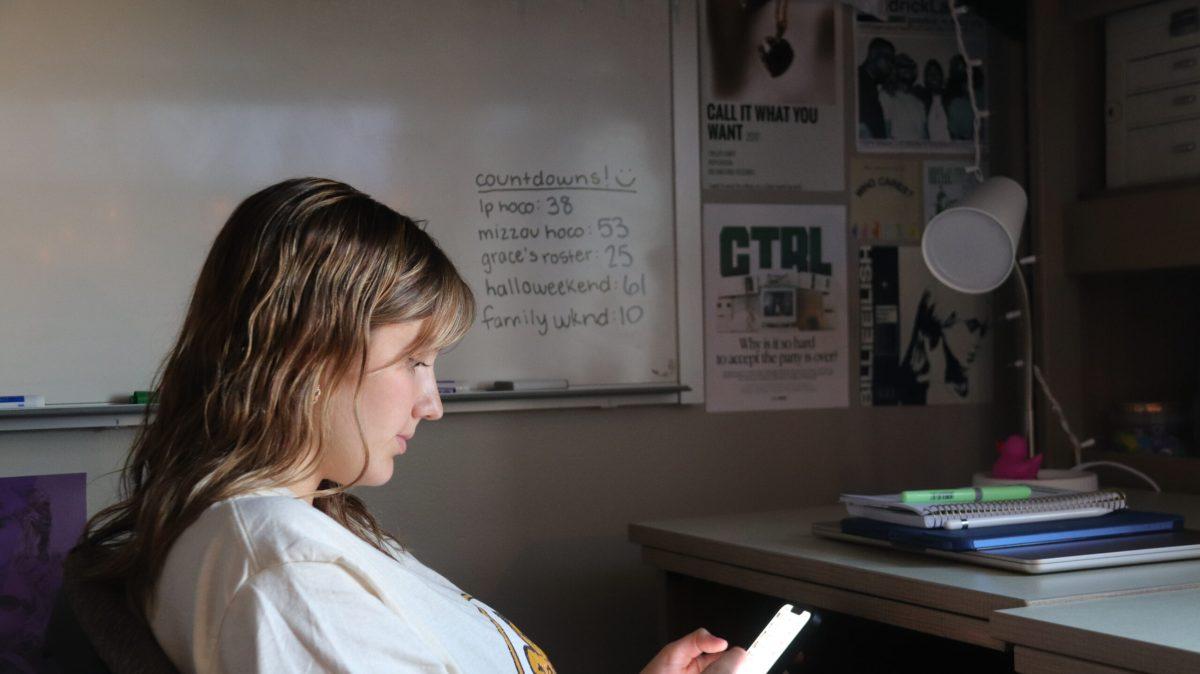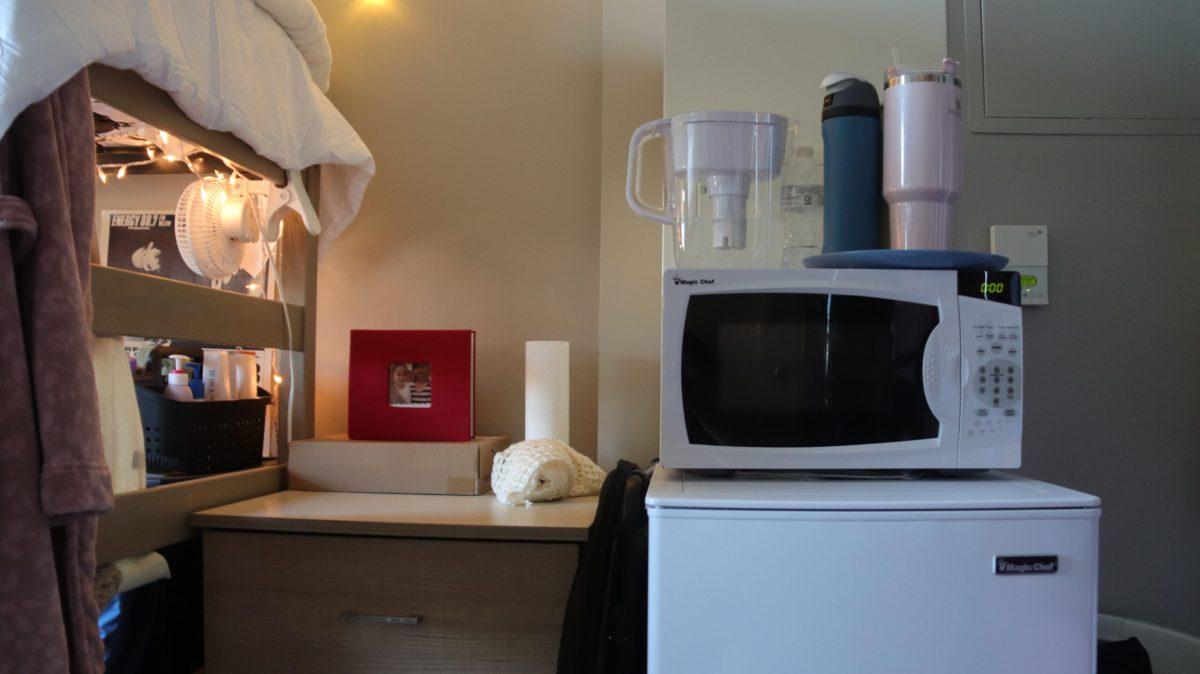
Posters and fairy lights brighten Grace Gniech’s side of her converted dorm on Aug. 29 in Hudson Hall. Gniech planned to take more decorations, but left most at home in case she was asked to move, which ResLife told Gniech was possible after move-in.
After initial communication frustrations with Residential Life, students express satisfaction with room sizes.
On June 1, freshmen Emmie Hachenberger and Grace Gniech received their housing assignment from MU Residential Life: converted.
The two roommates, who met on Instagram, weren’t exactly sure what it meant. Their assignment portal included a floor plan, but not much else.
“You’re already a freshman in college so it’s like everything’s thrown at you at once and you’re already overwhelmed and then now you’re faced with the uncertainty of ‘ok is this where I’m staying?’” Hachenberger said.
 Posters and fairy lights brighten Grace Gniech’s side of her converted dorm on Aug. 29 in Hudson Hall. Gniech planned to take more decorations, but left most at home in case she was asked to move, which ResLife told Gniech was possible after move-in.
Posters and fairy lights brighten Grace Gniech’s side of her converted dorm on Aug. 29 in Hudson Hall. Gniech planned to take more decorations, but left most at home in case she was asked to move, which ResLife told Gniech was possible after move-in.
In early August, images of the converted dorms began circulating online. The images depicted what appeared to be study halls converted into three-person units and traditional two-person rooms equipped with a third bunk bed and rolling cart in place of an additional closet.
At their orientation later that month, a ResLife representative told Gniech at a tabling event that too many students wanted to live in the dorms, so some students were placed in converted rooms instead. An official explanation of the situation was never given to students.
 Emmie Hachenberger scrolls through social media at her desk on Aug. 29 in Hudson Hall. The whiteboard behind Hachenberger is one quirk of their converted study room dorm. She uses it to keep track of upcoming dates and to work out math problems.
Emmie Hachenberger scrolls through social media at her desk on Aug. 29 in Hudson Hall. The whiteboard behind Hachenberger is one quirk of their converted study room dorm. She uses it to keep track of upcoming dates and to work out math problems.
Andy Cross, a sophomore living in a converted single room with roommate Thomas Brennan, had a similar experience with a lack of communication, which he said was unprofessional of the university.
“If they’re not willing to come out and say ‘we have this problem, we’re working on it, don’t worry, we will have a solution for you guys even if it’s not the best solution,’” Cross said. “That’s what I wish the school would have done instead of just being really hush-hush about it.”
Uriah Orland, associate director of the MU News Bureau, said converted housing is a common practice among higher education institutions and has been implemented before at MU.
 A folding chair squeezes between Grace Gniech’s dresser and the fridge on Aug. 29 in Hudson Hall. Gniech uses the awkward spacing on her side of the converted room for extra storage.
A folding chair squeezes between Grace Gniech’s dresser and the fridge on Aug. 29 in Hudson Hall. Gniech uses the awkward spacing on her side of the converted room for extra storage.
Currently, Brooks, Dogwood, Defoe-Gram, Gillette, Hawthorne, Hudson, Johnston, McDavid, Respect, Responsibility and Wolpers halls all contain converted rooms. Students living in converted housing pay equal tuition to those living in traditional units.
Square footage calculations were done by the university to ensure adequate space for students, Orland said.
Despite initial communication frustrations, Hachenberger, Gniech and Cross say they are ultimately satisfied with their spaces.
“Well, when I got here first, it was honestly fine. Looking at the other people’s dorms, I like ours better than theirs,” Gniech said. “I mean, it is bigger than the other rooms.”
 Emmie Hachenberger’s metal rack closet displays her colorful sweaters on Aug. 29 in Hudson Hall. Roommate Grace Gniech’s closet sits to the left, and both use the upper shelf for cleaning supplies. “I was concerned because I have a lot of clothes,” Gniech said. “But apparently I don’t because it all fits on one rack.”
Emmie Hachenberger’s metal rack closet displays her colorful sweaters on Aug. 29 in Hudson Hall. Roommate Grace Gniech’s closet sits to the left, and both use the upper shelf for cleaning supplies. “I was concerned because I have a lot of clothes,” Gniech said. “But apparently I don’t because it all fits on one rack.”
Cross applied in late March during the second round of housing. Initially unsure if he would receive housing at all, the assignment came with relief.
“At the end of the day, kids aren’t gonna be homeless this year because that was my biggest worry […] especially throughout the summer,” Cross said.
Some larger rooms designed for two people were converted into housing for three. Cross said he couldn’t imagine rooming with two other people, and was happy to stay with his roommate.
Ultimately, Hachenberger and Gniech made the room work for them. The room’s whiteboard gave Hachenberger a convenient space for working out math problems, and Gniech was able to fit all her clothes on the metal rack closet provided by the university.
“Honestly, I don’t really have any issues with it,” Gniech said.
Email [email protected] if you live in converted housing and would like to share your experience with The Maneater.
Edited by Scout Hudson | [email protected] Edited by Sterling Sewell | [email protected]